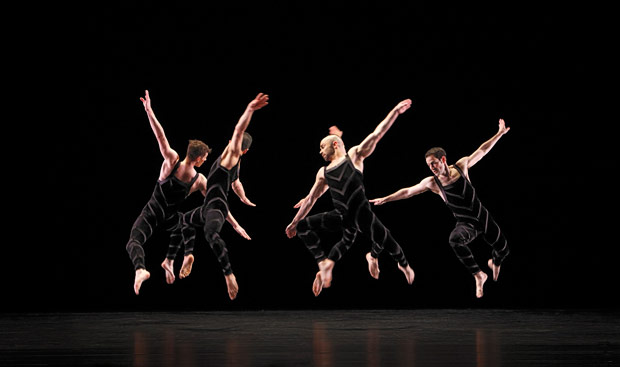
© Paul B. Goode. (Click image for larger version)
Paul Taylor American Modern Dance
Diversion of Angels, Promethean Fire
Lyon Opera Ballet
Summerspace
★★★★✰
New York, David H. Koch Theater
15 March 2017
ptamd.org
www.opera-lyon.com
davidhkochtheater.com
Sunday night, the New York dance scene flocked to see three of America’s dance pioneers side by side in “Icons: Graham, Cunningham, Taylor.”
This oddly rare opportunity was made possible thanks to Paul Taylor. His visionary venture, Paul Taylor American Modern Dance, began presenting key classics of the American modern dance repertoire in 2015. In two years PTAMD has shone the light on works by Doris Humphrey, Donald McKayle, Martha Graham and now, Merce Cunningham too.
Ordered chronologically, the program was as educational as it was pleasurable. Paul Taylor Dance Company kicked it off with Graham’s Diversion of Angels from 1948. The Lyon Opera Ballet followed with Cunningham’s Summerspace from 1958, and Taylor’s Promethean Fire from 2002 rounded out the program.
Graham was the high priestess of American modern dance, and it comes as no surprise that her influence permeates the program. Both Cunningham and Taylor danced for her, and like Graham, both Cunningham and Taylor started their own troupes with their own visions. Taylor danced in Cunningham’s company, which was founded in 1953, and began Paul Taylor Dance Company a year later, in 1954. Unlike Cunningham, who left Graham’s troupe before founding his own, Taylor continued to dance with Graham while his company was in its fledgling years.
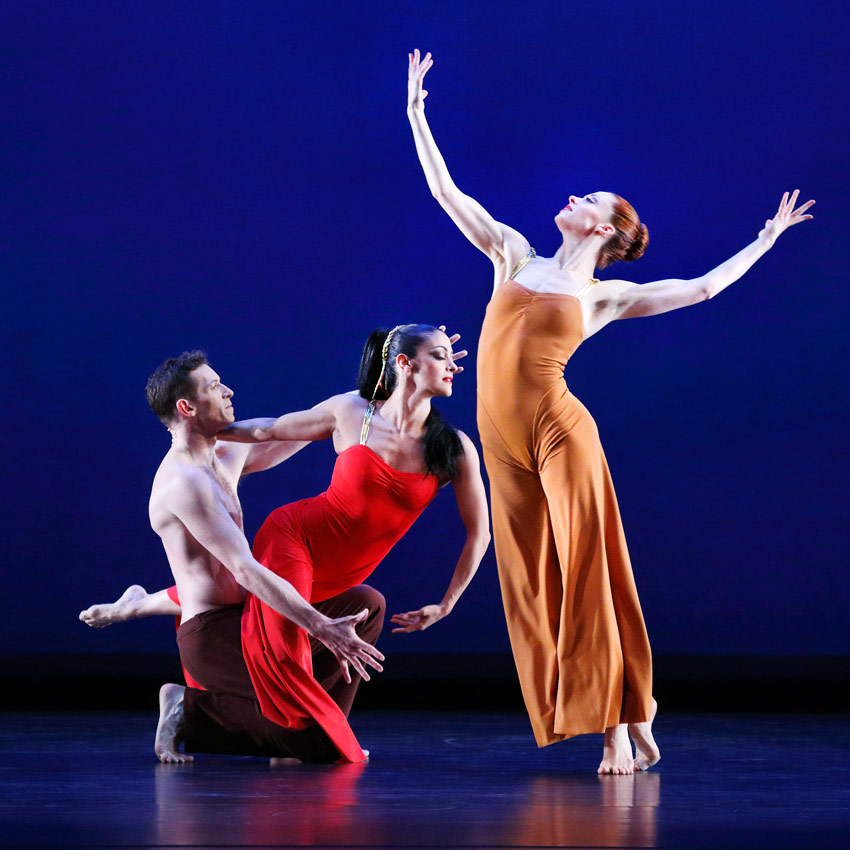
© Paul B. Goode. (Click image for larger version)
Diversion, which PTDC first performed in 2016, is an exploration of love. Grown-up love, giddy, untainted love, and of course, red hot love. Eran Bugge and Michael Novak were the bubbly couple in yellow, Parisa Khobdeh and Sean Mahoney played an impassioned pair and Laura Halzack and Michael Trusnovec were the mature ones, embodying mutual respect and adoration. Interestingly, the steamy pair wasn’t the easiest to read, which may say more about Graham’s definition of passion as fickle and inconsistent than the dancers. Khobdeh gave it her all, audibly winding herself with Graham’s concave contractions of the abdomen, but it didn’t feel as distinct as the young lovers, nor as distinguished as the steady pair, who stand like pillars of unconditional, infinite love.
After some weird, late winter weather, Robert Rauschenberg’s dappled rainbow backdrop and unitards for Summerspace were a welcome breath of fresh air. Since the Merce Cunningham Dance Company stopped performing in 2011, his works live on through select licensing to other troupes, managed by the Cunningham Trust and Fellowship. The Lyon Opera Ballet first staged Summerspace in 2012, and the lithe, tone and slightly voluptuous dancers look at once at ease and almost too turned out. Their bodies comfortably hold long, difficult poses without breaking a sweat, and their limbs rotate around without a flinch or wobble. Slow, deep, plodding movements are occasionally interspersed with spastic ones. The jumps all land with hard, purposeful thuds, a strange reminder of how earthbound our bodies are despite the spacious setting and Morton Feldman’s sparse score. Balletic movements – a coupé here, a renversé there, arms in high fifth or first – are abstracted to the point of supreme awkwardness. Bodies drift in and out of the wings for an ad infinitum effect.
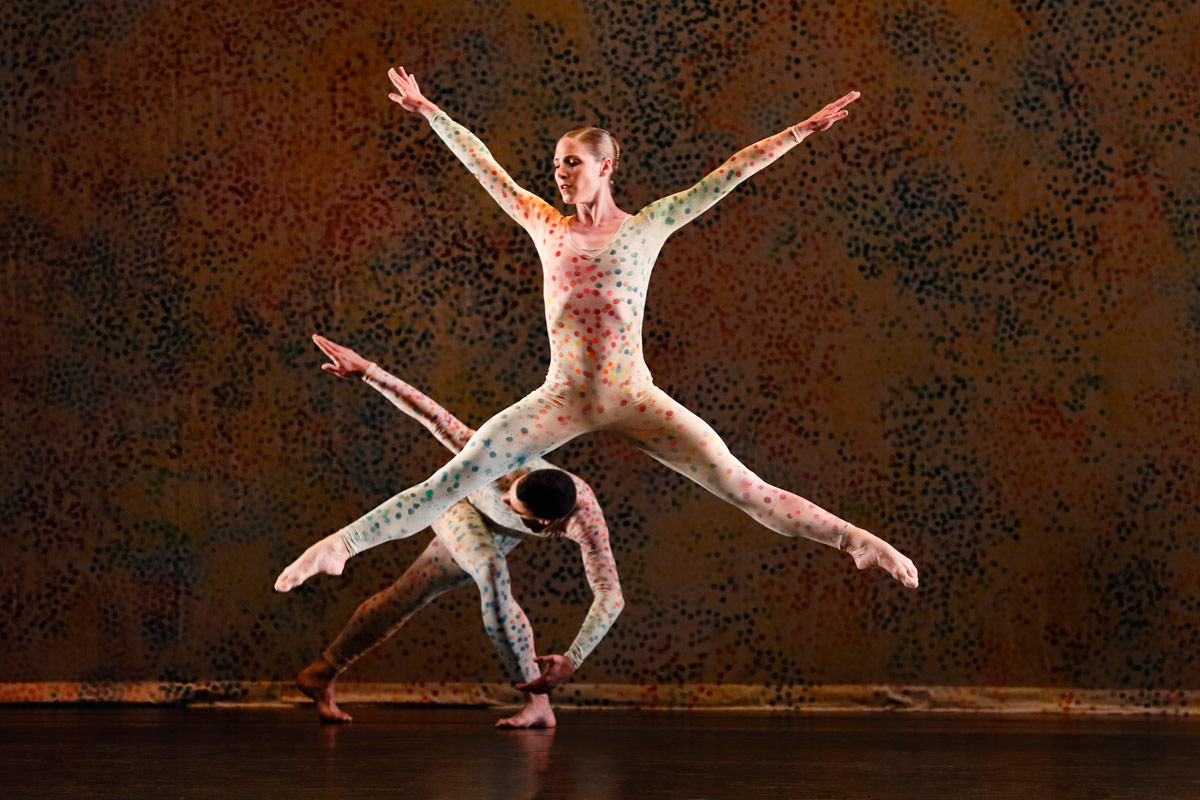
© Paul B. Goode. (Click image for larger version)
Taylor’s Promethean Fire couldn’t be more different, for so many reasons. Using Leopold Stokowski’s orchestrations of Bach (Toccata and Fugue in D minor, Prelude in E-flat minor and Chorale Prelude BWV 680), this is Taylor’s post-9/11 work. Though it doesn’t have a specific narrative, Fire writhes and reels with deep human feeling, from despair and desperation to hope and maybe even redemption. By using Stokowski, Taylor sends the audience on a roller coaster ride of emotion, particularly the fire-and-brimstone-laden Toccata and Fugue. Taylor collapses his dancers in gnarled piles, and strings them out again in compelling constructions of contraction and expansion – a play with density we often see in works by Crystal Pite. While he doesn’t indulge in “Mickey Mousing,” matching his steps to the music, he captures the tides of Bach’s music. Statuesque poses, lifts and arcing movements echo the opening Graham work, but Taylor’s take is more nimble, and more musical.
The philosophies of these great artists vary greatly, but out of the three presented this evening, Taylor stood out as the one who may live longest in the popular imagination, and whose work may continue to be more relevant to contemporary audiences. He has two distinct advantage over the other two: at 86, he is still alive and working, and the work he chose was less than 20 years old. Step for step, Taylor has more obvious Graham-esque notions than Cunningham. But, Graham’s influence on Cunningham is just as deep if not as visible. Like Graham, Cunningham created his own technique methods and both of them had particular perspectives on music and dance.
Cunningham and his partner John Cage famously set their precedent of believing dance and music could co-exist in the same space, but independent of one another. From the 20s through the 40s, Graham also worked with a partner, Louis Horst. As early as the 30s, Graham was creating dances before considering the music, and even went so far as to call music “decor,” concluding “Dance is the parent art, and it is healthy that it should cease to interpret music.”
Not all Taylor works have narratives, but where Taylor and Graham still sometimes relate is in a certain dedication to drama, to emoting the human condition. Where Taylor deviates from Graham and Cunningham is not just in the breadth of his repertoire – which runs the gamut from depictions of sexual depravity to pristine modern classicism – but in his musicality. It is also what is likely to make him the most popular, in the long run. For when all is said and done, most human cultures are inherently rhythmic, and crave communing with music rather than a cerebral separation from it.












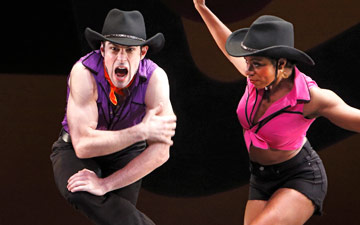
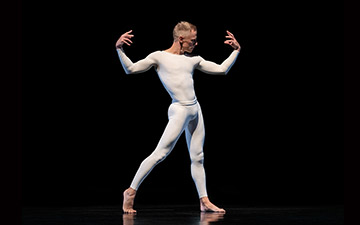
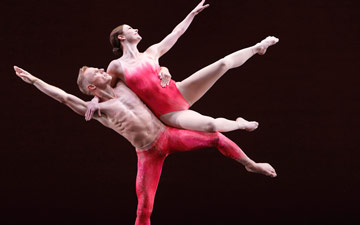

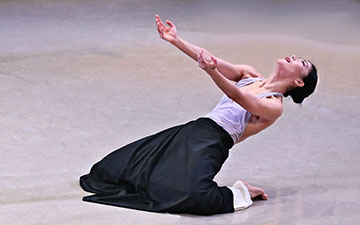
You must be logged in to post a comment.